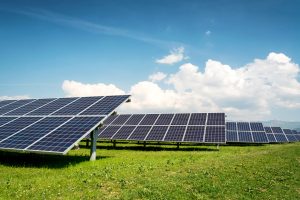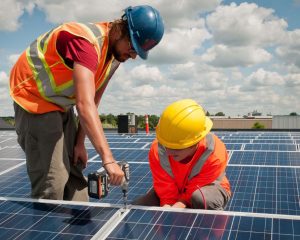Solar Power in Canada
Renewable energy is generated through natural processes. There are several types of renewable energy that are replenished by solar energy or generated heat from the bowels of the earth. These include generated energy from the solar system, wind, hydro, geothermal resources, ocean power, solid biomass and biofluids.
Against the backdrop of declining traditional energy resources, humanity is realizing that it is necessary to use alternative methods. Perhaps the disappearance of oil, natural gas and coal does not yet threaten humanity in the next hundred or two hundred years, yet it cannot be avoided.
The pluses usually include their abundance and availability (in production), independence from natural conditions, and greater productivity. But the biggest argument advanced by proponents of these sources is the employment opportunities for millions of people in the energy industry.
In favor of alternative energy sources, of course, the first plan is an environmentally friendly environment. People want to breathe clean air and raise their children on a green planet. However, renewable energy sources are very expensive. This is probably why this pleasure is more available in developed countries.
On the one hand, indeed, the countries of the European Union are faced with the reduction of traditional energy sources, and on the other hand, waste emissions into the atmosphere, global warming are becoming a global problem.
But despite the high cost of installing equipment for the production of renewable energy, its cost ultimately pays off handsomely.
Some researchers predict that between 2020 and 2040 the world will completely switch to clean energy. Nearly 50 countries, hard hit by climate change, have decided to transform conventional energy production into renewable energy by 2050. Also, countries around the world are actively introducing the energy of the solar system, wind and geothermal.

One such country is Canada. So, in May 2018, during the ninth meeting of the International Renewable Energy Agency (IRENA), representatives of the Canadian government expressed their intention to become members of IRENA.
Renewable energy in Canada accounts for 2/3 of the country’s energy production and 20 percent of its main energy supply comes from hydropower. Canada ranks second in the world in hydropower production. In addition to the abundance of hydro resources, wind energy, biomass, solar system energy, the ocean and geothermal also serve as sources of energy.
hydropower
Natural water flows in rivers provide kinetic energy that can be transformed into consumed energy. In the early stages, mechanical energy, milling and sawing energy was used for irrigation. In addition, rivers were used to transport logs from the forest to industrial centers.
At the moment, hydropower is the main energy used, produced from the flow of water, since Canada has many mountain rivers flowing into three bordering oceans.
Favorable geographical location of Quebec contributes to the construction of stations in this region.
In total, there are about 542 hydroelectric stations in Canada. 58% of electricity in Canada is generated by hydropower.
Bioenergy
Bioenergy consists of various types of energy derived from liquid, solid or gaseous biomass.

The vast territory and active forest and agricultural industry allows this country to have access to diversified biomass resources for energy production. The best regions for transforming wind power are coastal areas. However, there are still no wind turbines in coastal regions, as most of them are located in remote areas without access to electricity.
Canada has about 5,130 wind turbines installed in 125 wind farms.
solar energy
Solar system technology includes electrical and mechanical equipment. First of all, solar panels are used to heat water and ventilate the air in the building. In Canada’s major cities, more than half of residents use solar panels on their rooftops.
Most of the solar potential is in Ontario. In 2017, the potential of the photovoltaic industry in Canada was 2,911 megawatts.
But due to technical, economic and environmental barriers, ocean energy is not widely exploited today.
Currently, a tidal power plant is installed in the province of Nova Scotia, which generates about 20 megawatts of electricity. In the near future, a power plant is planned to be built on the Bay of Fundy. It is in this bay that the largest number of ebbs and flows in the world is recorded.
For example, the installed capacity of solar photovoltaic systems in 2020 was about 3342 MW, which is higher than in 2019.However, a highly centralized and regulated electricity sector is holding back market growth.
The Canadian government has committed to phasing out coal over the coming years.
creating ample opportunity for renewable energy to penetrate deeper into the energy sector.
Extremely high government support for renewable energy generation is expected to boost the market in the near future.